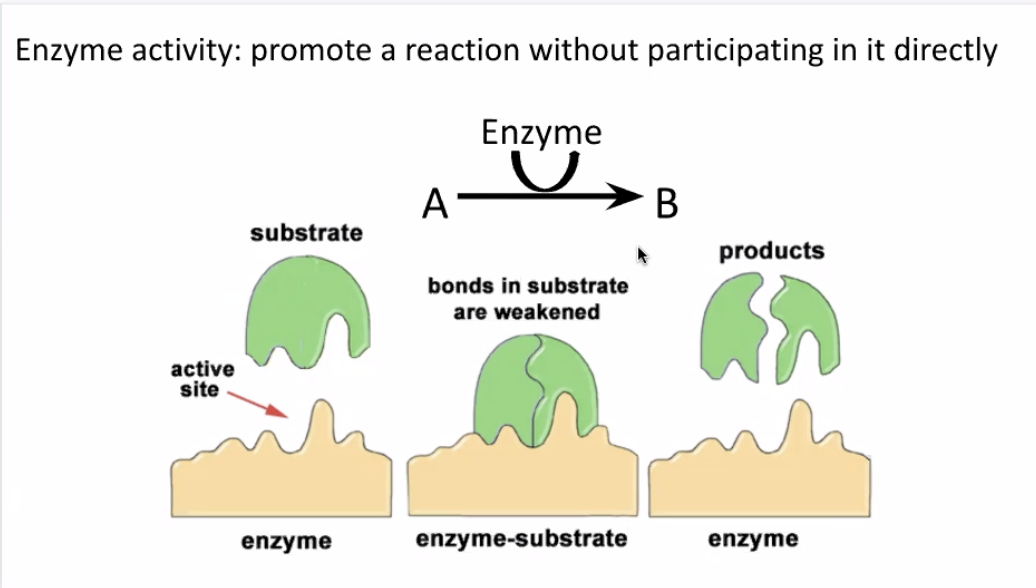Table of Contents
1 Enzymes
Proteins that build things up and break things down!
*Enzymes are catalysts. They speed reaction rates but do not affect the change in free energy of the reaction (the difference in potential energy between reactants and products).*
A macromolecular catalyst, it…
- Speeds up the rate of reactions
- Does not get consumed by the reaction
- Not a fundimental product
- Not a fundiment reactant
- Shape determines the reactions that it can participate in
- Enzymes are subject to protean denaturation => if the protein unfolds, its function will be lost. Triggered by excess heat, acid, and other problems
- is unlike non-protein, inorganic catalyst — inorganic non-proteins need to unwrap or wrap.

Figure 1: Screen Shot 2020-09-30 at 2.45.04 PM.png
1.1 Enzymes doing things
- The reactant (called "substrate") fits into a pocket ("active site") in the enzyme for the reaction to occur. Yes, there could be multiple active sites for multiple reactants
- The enzyme rearrange itself slightly to hold the enzyme in place. This is called "induced fit"
- A cofactor ("catalyst to the catalyst") also bind to the active sites
Enzymes minimize the activation energy hump
1.2 Why do Enzymes work?
There are three main ways that Enzymes work:
- Stress and straining of the bonds to force towards the nessariy transition state
- Changing the substrate to gavourable orientation
- Active site animo acids rearranging electrons + creating partial charges to favor a reaction
Or, in Dr. Hauser's Words
““” - Orienting the reactions substrate(s) to promote more effective collisions (and therefore reactions - Stressing or straining bonds to temporarily and/or slightly lower the strength of attraction to allow the bond to break more easily - Involving amino acid R-groups or sidechains in creating the transition state between reactants and products ““”
Remember: The Fundamental Energy Difference does not change whether or not reactions are helped by the Enzyme.
For more information about the reaction hump and its related energy changes, see KBhBIO101Enthalpy, and KBhBIO101Entropy.
If the body needs a favorable reaction, Enzymes make them quicker. If the body needs a non-favorable reaction, Enzymes catches the energy to make it happen.